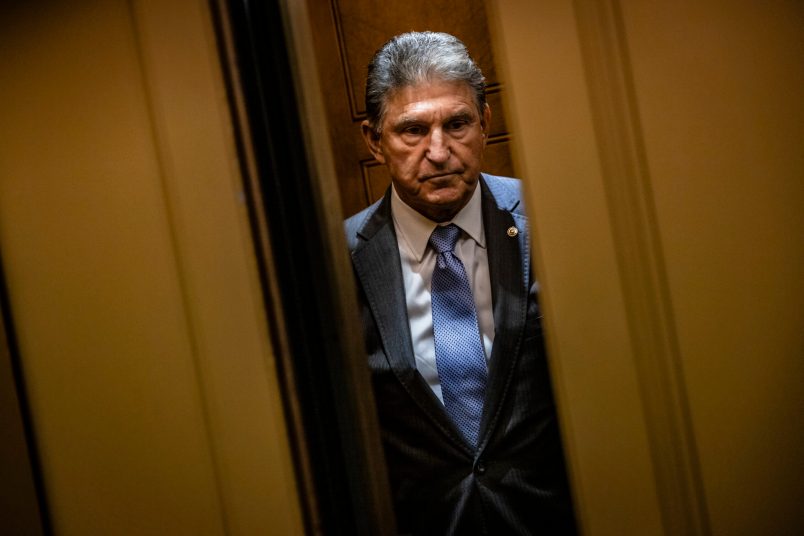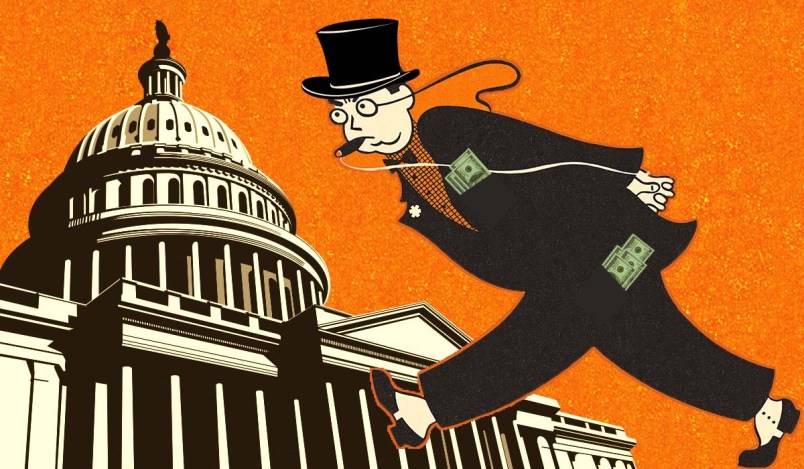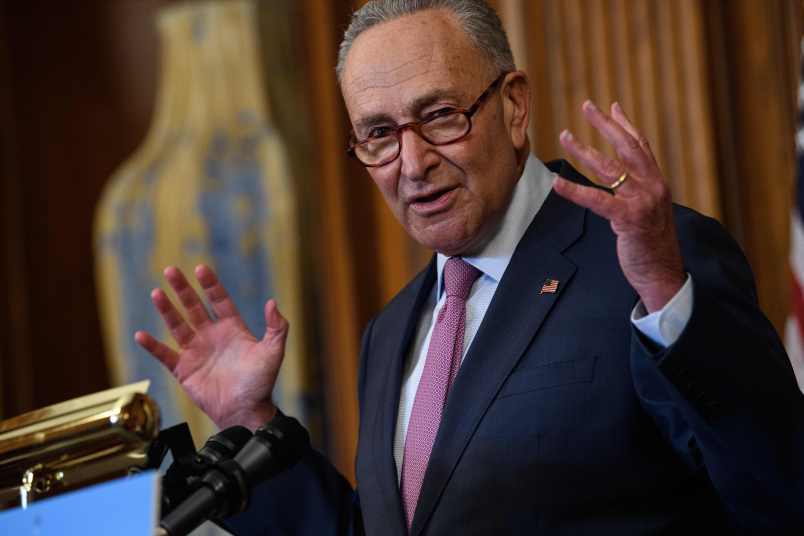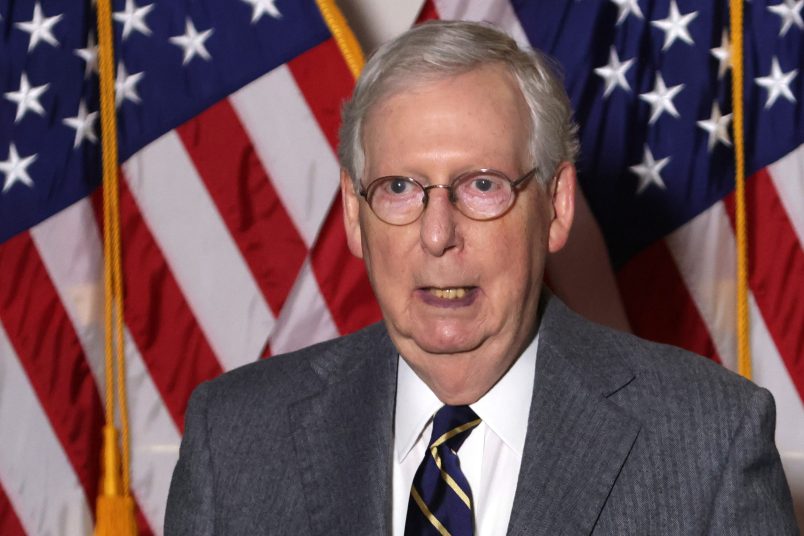Nikki Fried headed into Election Day last fall with a spring in her step.
The Democratic candidate for Florida’s agricultural commissioner had led in nearly every recent public and private poll, as had Sen. Bill Nelson (D-FL) and Andrew Gillum (D), the party’s nominee for governor. They had built up what looked like solid leads in early voting. While Fried says she remained “cautiously optimistic” about her chances, other Democrats were already measuring the drapes.
“Everyone kept asking me, ‘Who’s going to be on your transition team?'” she told TPM.
But election night didn’t go as planned. By the time Fried went to bed, Republicans led in every single statewide race.
Weeks of recounts, lawsuits and protests followed. After the smoke cleared, Fried emerged with a 6,753-vote lead out of more than 8 million votes cast— the only Democrat to win statewide in Florida, as Nelson and Gillum both fell just short.
Florida’s results were the biggest disappointment of an otherwise triumphant night for Democrats in competitive states around the country. As the party made inroads in other formerly red Sun Belt states and rebounded in a major way in some key Midwestern battlegrounds, the perennial swing state stayed just out of Democrats’ reach.
The results gave Fried “so much heartbreak.” They left her and other Democrats wondering what went wrong, and whether they can fix things in time for 2020, when strategists in both parties believe the Sunshine State could once again decide the presidency.
Past Failures
The 2018 election was the latest bleak result for Florida Democrats.
Billionaire Rick Scott won the governorship by just over one percentage point in the 2010 GOP wave, and hung on for an even closer win over Republican-turned-Democratic former Gov. Charlie Crist four years later. He defeated Nelson by just 10,000 votes last fall.
Scott’s fortune played a huge role — he spent more than $200 million of his own money in his three elections including $64 million in 2018, building out a targeted field operation that Democrats have failed to match.
Crist, now a congressman, said he’s “living evidence” of Democrats’ recent statewide struggles.
“It’s disappointing to say the least, but I think that there is hope that Florida will continue to be competitive. Obviously it is competitive,” he told TPM.
Crist was in part a victim of the year he ran. Clinton’s 2016 loss came as Trump saw a huge surge in votes from rural and exurban North Florida and the Panhandle, patterns that continued in 2018. Nelson’s and Gillum’s losses are harder to justify given Democrats’ big wins in other swing states. The two essentially beta tested Democrats’ ideological divide, with the old, white, moderate Nelson and the young, black, progressive Gillum reaching near-identical results.
Nelson was the only Senate Democrat to lose a race in a state that Trump had won by less than double-digit margins, and Democrats both nationally and locally expressed deep frustration that he didn’t take Scott seriously enough. He hired campaign staff late, did little outreach to key Hispanic communities, and as the state’s sole statewide elected Democrat didn’t do much over the years to help his party build a ground game.
When Gillum pulled off a surprise primary win over a crowded field including former Rep. Gwen Graham (D-FL), he came into the general election with no statewide organization. Gillum ended up raising huge sums, but it takes early investment to build up field operations — late TV buys only go so far. An FBI probe into Tallahassee hurt him too, though it didn’t end up involving Gillum.
State party chaos didn’t help either. Florida Democratic Party Chairman Stephen Bittel was forced to resign in late 2017 after multiple women accused him of creating a hostile work environment. His successor, Terrie Rizzo, spent much of the year playing catch-up to Scott’s well-oiled machine. Outside groups poured money into the state to help make up the difference, but their voter registration and field efforts were poorly coordinated, often duplicating one another’s efforts in one part of the state while missing troves of voters elsewhere.
Democrats argue it’s not all doom and gloom. They picked up two House seats in 2018, Fried won, and Nelson and Gillum fell just short. But they agree something needs to change.
“There is an element of randomness to it. You can play blackjack and lose 10 hands in a row and not play bad,” said Steve Schale, Obama’s top Florida adviser. “But there are real structural problems we have to deal with that make it harder for us to win.”
Demographic Shifts Cut Both Ways
Democrats’ ongoing Florida struggles come amidst a period of rapid growth and diversification in the state.
Non-Hispanic whites made up just 54.1 percent of Florida’s population in 2018, according to Census figures, down from 59.1 percent in 2010 and 66.4 percent in 2000. The total Hispanic population has grown to 25.6 percent of the state’s overall population, up from 22.5 percent in 2010 and 16.8 percent in 2000.
The fastest growth has come in the Democratic-leaning Puerto Rican community. That population more than doubled since 2000 and more than 1 million lived in Florida by 2017. That was before Hurricane Maria hit the island. Another 200,000 Puerto Ricans moved to Florida in its aftermath, according to some estimates, though it’s as yet unclear how many have stayed.
But Hispanics aren’t the only ones moving to Florida. White retirees continue to flock south in droves, with massive retirement communities like The Villages in central Florida ranking among the fastest-growing metro areas in the country.
Retiree arrivals have shifted from the Northeast to the more conservative Midwest in recent years. Old, white midwesterners are about as likely to lean Republican as young Latinos are to lean Democratic. They’re also much more likely to be citizens — and significantly more likely to vote.
“Any gains Democrats have made with their constituencies, with Puerto Ricans and other Hispanic groups in central Florida and the southeast around Miami, are being offset by the influx of white retirees that are moving into the state,” said University of Florida Professor Michael McDonald. “That’s why we continue to be this battleground state.”
Autopsies and Investments
Even as the state has become marginally more Democratic demographically, Republicans have out-organized their opponents on the ground for the past decade. That’s partly because it’s simply a lot easier to register retirees moving into concentrated communities than new arrivals scattered across diverse communities. Scott’s money played a huge factor. But Democrats admit they haven’t been doing enough.
When Obama won the state in 2008, Florida Democrats had a voter-registration edge of 670,000. Their edge is now down to 250,000 — the lowest in decades. Both the Florida Democratic Party and the Democratic National Committee have been in various states of disarray for much of the past decade, and the bevy of outside groups that have stepped in to try to plug holes in Democrats’ organizational apparatus have failed to coordinate amongst themselves and replace a functioning party.
“We’re in a better place demographically but a worse place politically, partly because we do voter registration for four months every four years,” said Schale.
Florida Democrats are currently going through a formal autopsy, and held their first in-person statewide meeting last Saturday to discuss what must be changed. A full report is expected by late spring.
Florida Democratic Party executive director Juan Penalosa admits they were outdone in 2018 — but says things are changing.
Penalosa came onboard in March 2018, a late start to begin building out an operation in a state as massive and diverse as Florida.
“For us to win we need to do a ton of party registration,” Penalosa told TPM.
The state party has laid out a $2 million battle plan for 2020, with $400,000 of that already raised. The goal is to register at least 200,000 new Democratic voters this year, a major improvement over the 80,000 registered in the entire 2018 cycle. Party operatives also plan to continue to invest in getting low-propensity voters to register for vote-by-mail — a way for them to push their supporters to vote before Election Day and make sure they turn in their ballots.
Part of that includes Organizing Corps, a new effort from the Democratic National Committee to train swing-state college juniors in field operations, have them lead on-campus efforts their senior years and and then provide them stipends to work after graduation through the 2020 elections.
The DNC’s first wave of recruits will be from Florida, Pennsylvania, Wisconsin and Michigan. Penalosa says he doesn’t have an exact number of how many will be in his state, but that it will be at least 100 people — and he plans for it to be double that number, even if he has to raise funds for the others himself.
Priorities USA, Democrats’ main national super-PAC, is stepping up with a huge digital investment as well. The group is pouring $100 million into Florida, Pennsylvania, Wisconsin and Michigan this year on digital messaging efforts — the four core states the group believes are most likely to decide the presidency.
The state party has also issued state records requests to try to compile a robust list of former felons in the state, hoping to take advantage of a recent state constitutional amendment that restored their right to vote.
Democrats have talked about those 1.4 million former felons as a huge potential boon: Crist called registering that new pool of potential voters “the greatest hope there is” for state Democrats.
But McDonald, the Florida professor, told TPM that the real number of eligible voters in that population is likely more like 300,000. It’s early, but McDonald said his initial review of new voter registration numbers indicates that just 5,000 former felons have registered to vote so far — and that Democrats barely lead Republicans among this group.
Republicans aren’t standing still, either. Unlike in 2016, Trump and the RNC are actually building out a robust campaign infrastructure. Democrats will spend the next year-plus fighting it out for their party’s presidential nomination, and a late nomination could leave whoever’s the nominee scrambling to catch up in organizational efforts. Florida Democrats saw a similar scenario play out last fall after Gillum won his August primary, and are concerned it might happen again.
A lot can happen in the 20 months until the 2020 election. The Democratic nominee will play a huge role in how the party does in Florida next year. The looming investigations hanging over Trump could doom any chance of reelection, or he could look more formidable by then. And Florida has historically been incredibly close — less than half a percent divides the two parties in the last five presidential elections combined.
But Florida Democrats know they have their work cut out for them.
“With a little extra added effort this can be overcome,” Crist said. “I believe that.”






